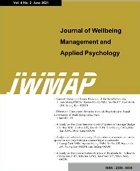 E-ISSN : 2586-6036
E-ISSN : 2586-6036
Vol.3 No.1
Abstract
The purpose of this study was to examine the moderating effect of board education diversity on the relationship between ownership concentration and environmental accounting disclosure. The study was driven by stakeholder's theory. The longitudinal research design was adopted in the study. The study targeted 27 listed firms from 2008 to 2017. Panel regression analysis results indicated ownership concentration (β = -.131, ρ<.05) had a negative and significant effect on environmental disclosure in Kenyan firms. However, Board education diversity positively moderated the relationship between ownership concentration (β=.138, ρ<.05) and environmental accounting disclosure. Thus, board education diversity is an enhancing moderator in the relationship between ownership concentration and environmental accounting disclosure. The findings validate stakeholder theory's proposition. The study recommends that firms listed in the NSE ought to diffuse ownership concentration, and their boards should be well educated and experienced to enhance environmental accounting disclosure.
Abstract
Anecdotal reports indicate that maladaptive patterns of Internet use constitute behavioral addiction. Internet addiction is characterized by unrestrained and awfully controlled engrossment or behaviors regarding internet access that lead to impairment, stress, dimensionally measured depression, indicators of social separation and anguish. By reviewing and analyzing approximately 100 articles we present evidence that are able to provide an overview of the main themes and proclivity covered by existing and relevant studies. The vital detection of this research unveils that many factors related to social, demographic, lifestyle changes related constructs have a bearing on the phenomenon of internet addiction strongly. This study not only reached certain conclusions for both theory and practice, but also defined future lines of research according to the gaps detected by the study's results. The main findings from this literature, though not conclusive, but will help the researcher and policymakers to obtain a better understanding and description of the problem faced by the youth and necessary to develop some remedies to lessen the addiction phenomenon.
Abstract
As people's income rises dramatically, people's happiness seems not as high as expected. In fact, there are two different arguments about the relationship between income level and happiness. The focus of the debate is whether the correlation between income and probability of happiness is positive or negative. Therefore, we hypothesizes that the relationship between income and probability of happiness presents an inverted U-shaped curve. Then, this paper sets China as an example to explore the effect of income on happiness. The data from the Chinese General Social Survey (CGSS) in 2015 is employed to conduct empirical analyses under the Probit model and the Zero-Inflation-Passion model. The empirical findings indicate that the effect of income on happiness presents an inverted U-shaped curve and significantly in statistic. Meanwhile, spouse's income, educational level, marriage time and house property have a positive and significant effect on happiness. Conversely, age and local living standards have a negative and significant effect on happiness. Unfortunately, even though registered residence and children have a negative effect on happiness, they do not get through the significant test. In order to ensure the robustness of our empirical results, we test the robustness of the above empirical results by adjusting the sample size. The results of robustness test verify that our empirical results are robust. Moreover, this paper also makes a small contribution to the current literature with a sample from China.
Abstract
In Korea, where the residential environment of well-being has been especially developed, marketing using well-being brands has been actively carried out, and more recently, there has been a growing interest in the well-being brand experience and the correct understanding of consumers' perceptions and attitudes. This study was intended to reveal that the experience of well-being brands increases the attitude and confidence of brands, and consequently positively acts on the intention and loyalty of purchasing them. First of all, the well-being brand experience not only works positively on brand trust and attitude, but also raises the intention of buying again. Second, well-being brand trust is showing a positive effect on brand attitudes and intent to buy back. Third, the well-being brand attitude turned out to have a positive effect on the intention of repurchase. Unlike conventional well-being brand-related research, this study focuses on brand experience, so it provides a new understanding of well-being brand experience and consumer psychology and behavior in well-being brand marketing. Thus, adding a new perspective to existing well-being brand research, the company's perspective provides practical implications that should be considered for successful well-being marketing.













